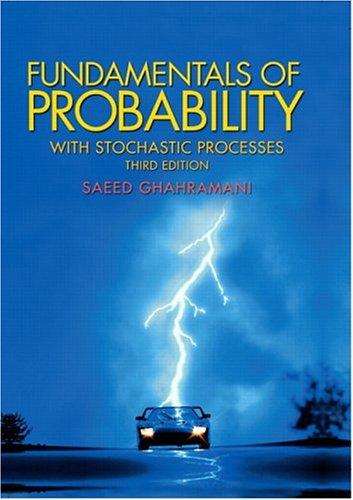11. For n = 1, 2, 3,... , let xn = (1)nn. Let X be a discrete...
Question:
11. For n = 1, 2, 3,... , let xn = (−1)n√n. Let X be a discrete random variable with the set of possible values A = {xn : n = 1, 2, 3,...} and probability mass function p(xn) = P (X = xn) = 6 (πn)2 . Show that even though /∞ n=1 x3 n p(xn) < ∞, E(X3) does not exist.
Fantastic news! We've Found the answer you've been seeking!
Step by Step Answer:
Related Book For 

Fundamentals Of Probability With Stochastic Processes
ISBN: 9780131453401
3rd Edition
Authors: Saeed Ghahramani
Question Posted:






